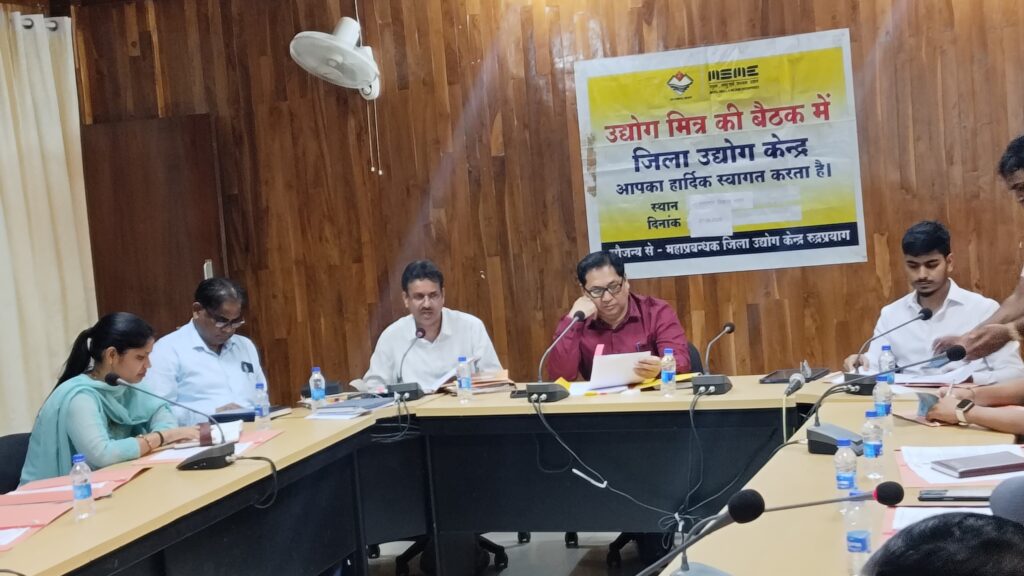How Random Number Generators Ensure Fairness in Modern Games
1. Introduction: The Importance of Fairness in Modern Gaming
Fairness in gaming, whether in digital or physical formats, is essential for maintaining trust, ensuring player engagement, and preserving the integrity of the gaming industry. Fair gameplay means that outcomes are determined by chance, skill, or a combination of both, without any manipulation or bias. This fairness is not only vital for players’ confidence but also has significant societal and economic implications, such as regulatory compliance and reputation management.
At the core of modern gaming fairness lies sophisticated technology—particularly, Random Number Generators (RNGs). These systems underpin the unpredictability of game outcomes, making sure that every player has an equal chance of winning and that results are genuinely random.
Contents
- Fundamentals of Random Number Generation (RNG)
- Ensuring Fairness: Technical and Regulatory Standards
- How Modern Games Implement RNG for Fair Outcomes
- Case Study: Aviamasters – Game Rules as an Illustration of Fair RNG Use
- Addressing Malfunctions and Ensuring Trustworthiness
- The Role of Return to Player (RTP) and Multiplier Mechanics in Fairness
- Advanced Topics: Non-Obvious Aspects of RNG Fairness
- Consumer Confidence and Transparency
- Future Trends and Challenges in RNG Fairness
- Conclusion: Upholding Fairness in the Evolving Landscape of Modern Gaming
2. Fundamentals of Random Number Generation (RNG)
a. What is an RNG and how does it work?
An RNG, or Random Number Generator, is a computational or physical device designed to produce a sequence of numbers that lack any discernible pattern. In digital games, RNG algorithms generate outcomes like spins, card shuffles, or dice rolls. These systems rely on complex mathematical formulas or physical entropy sources to simulate randomness.
b. Types of RNGs: Pseudorandom vs. True Random Number Generators
There are primarily two types of RNGs:
- Pseudorandom Number Generators (PRNGs): These use algorithms and initial seed values to produce sequences that appear random but are deterministic. They are fast, reproducible, and suitable for most gaming applications.
- True Random Number Generators (TRNGs): These derive randomness from physical phenomena—such as atmospheric noise, radioactive decay, or thermal fluctuations—making outcomes inherently unpredictable.
c. Key properties of a fair RNG: unpredictability, uniformity, and independence
For an RNG to be considered fair, it must exhibit:
- Unpredictability: Outcomes cannot be guessed in advance, ensuring fairness in each play.
- Uniformity: All possible results have equal probability over time, preventing bias.
- Independence: Each result is unaffected by previous outcomes, maintaining randomness across plays.
3. Ensuring Fairness: Technical and Regulatory Standards
a. Certification and auditing of RNG algorithms
To guarantee fairness, RNG algorithms undergo rigorous certification and auditing by independent third parties. These audits verify that the algorithms meet industry standards for randomness, and that their implementation is free from tampering or bias. Certified RNGs are often subjected to statistical tests—such as Diehard or NIST tests—to confirm their unpredictability and uniformity.
b. Regulatory bodies and compliance requirements
Regulatory agencies worldwide, like the UK Gambling Commission or Malta Gaming Authority, impose strict requirements on RNG systems. Operators must demonstrate compliance through documentation, audits, and ongoing monitoring, ensuring that game outcomes are fair and transparent for players.
c. Common vulnerabilities and how they are mitigated
Vulnerabilities such as predictable seeds, insufficient entropy, or software bugs can compromise RNG fairness. Mitigation strategies include using cryptographically secure seed generation, employing high-entropy sources, and implementing real-time monitoring systems that detect anomalies or malfunctions.
4. How Modern Games Implement RNG for Fair Outcomes
a. Integration of RNG into game mechanics
In contemporary gaming, RNG is seamlessly integrated into core mechanics. Whether spinning a slot reel, shuffling a deck of cards, or determining a multiplier, the RNG provides the foundational randomness that ensures each play is unique and unpredictable. Developers embed RNG calls within game code, often with additional layers of cryptographic security to prevent manipulation.
b. Examples of RNG in popular game formats (slots, card games, etc.)
For instance, in slot machines, RNG determines the position of symbols on the reels after each spin, ensuring outcomes are independent and fair. In digital card games, RNG shuffles cards virtually, mimicking physical shuffling with high randomness quality. These implementations are validated through certifications, confirming their fairness and compliance with regulatory standards.
5. Case Study: Aviamasters – Game Rules as an Illustration of Fair RNG Use
a. Overview of Aviamasters’ game mechanics and rules
Aviamasters is an innovative game that combines traditional elements with modern RNG technology. Its rules specify how outcomes, such as payouts or multipliers, are determined by the system. For example, the game begins at a fixed starting multiplier of ×1.0, ensuring that players have a clear baseline for potential winnings. The randomness introduced by the RNG influences subsequent game outcomes, maintaining fairness and unpredictability.
b. How RNG ensures the starting multiplier (e.g., always begins at ×1.0)
In Aviamasters, the starting multiplier is not arbitrarily set but is generated through a certified RNG process. This guarantees that the initial value is unbiased and unpredictable for each session. The system’s transparency ensures players can trust that no manipulation occurs, aligning with the core principles of fairness.
c. The role of RNG in determining outcomes, payouts, and game malfunctions
RNG influences all critical outcomes—such as the final payout, the appearance of bonus features, or the occurrence of malfunctions. When a malfunction happens—say, a software glitch—the system is programmed to void affected plays and payments, preserving fairness. This is akin to how regulated physical machines are tested and certified to prevent cheating or errors.
6. Addressing Malfunctions and Ensuring Trustworthiness
a. Definition and impact of malfunctions in RNG-based games
Malfunctions refer to unexpected errors or bugs in the RNG system that can affect game outcomes or payouts. Such issues can undermine player trust, leading to disputes or regulatory scrutiny. For example, a bug that causes certain outcomes to be favored or unfair payouts can severely damage a casino’s reputation.
b. How malfunctions void plays and payments, maintaining fairness
When a malfunction is detected, systems are designed to automatically void affected plays and refund players, aligning with industry best practices. This approach ensures that no unfair advantage is gained from technical errors. The integrity of the game is maintained because players can trust that any anomalies will be rectified transparently.
c. Safeguards and real-time monitoring systems
Modern gaming operators employ real-time monitoring tools that continuously oversee RNG performance. These systems detect irregularities, malfunctions, or potential tampering, triggering immediate actions such as halting gameplay or initiating audits. Such safeguards uphold fairness and comply with regulatory standards.
7. The Role of Return to Player (RTP) and Multiplier Mechanics in Fairness
a. Explaining RTP (e.g., 97%) and its significance
RTP, or Return to Player, represents the percentage of wagered money that a game is designed to pay back to players over the long term. For example, an RTP of 97% means that, theoretically, for every $100 wagered, players can expect to receive $97 back over time. RTP is a key indicator of a game’s fairness and profitability.
b. How RNG ensures the long-term fairness reflected in RTP
The RNG’s quality and the game’s payout structure work together to achieve the advertised RTP. Certified RNGs generate outcomes that, over millions of spins or plays, align with the designed probabilities. This statistical consistency ensures that the game remains fair in the long run, not favoring the house or the player unfairly.
c. The relationship between starting multipliers and game fairness
Starting multipliers, such as the baseline ×1.0 in Aviamasters, set initial conditions that influence payout potential. RNG determines how multipliers evolve during gameplay, ensuring that each session’s outcome is unpredictable yet consistent with the overall RTP. These mechanics balance excitement with fairness, preventing manipulation of results.
8. Advanced Topics: Non-Obvious Aspects of RNG Fairness
a. The importance of seed management and entropy sources
Seeds are initial values that start the RNG process. Proper seed management, sourced from high-entropy inputs like atmospheric noise or hardware-based entropy, ensures unpredictability. Poor seed choices can make outcomes predictable, compromising fairness.
b. The impact of game design choices on RNG fairness
Game mechanics—such as payout ratios, bonus triggers, and multiplier caps—must be designed to complement RNG properties. Ill-conceived designs can inadvertently introduce biases or reduce randomness quality, so thoughtful integration is crucial for maintaining fairness.
c. Emerging technologies: blockchain and provably fair algorithms
Blockchain technology enables decentralization and transparency, allowing players to verify outcomes independently. Provably fair algorithms combine cryptographic techniques with RNGs to give players confidence that results are genuine and unaltered, representing a significant advancement in trustworthiness.
9. Consumer Confidence and Transparency
a. How transparency in RNG processes builds player trust
Openly sharing information about RNG certification, audit results, and regulatory compliance fosters trust. When players understand that outcomes are generated through validated, independent processes, their confidence in the fairness of the game increases.
b. Tools and certifications available to players
Players can access certification seals, audit reports, and third-party verification tools that confirm RNG integrity. Some platforms even offer provably fair features, allowing players to independently verify each outcome via cryptographic hashes.
c. The importance of educating players about RNG fairness
Educating players about how RNG works, its certification processes, and their rights enhances trust and responsible gaming. Clear communication mitigates misconceptions and promotes transparency in the gaming ecosystem.
10. Future Trends and Challenges in RNG Fairness
a. Innovations in RNG technology
Advances include quantum RNGs, which use quantum phenomena for true randomness, and improved cryptographic algorithms that bolster unpredictability. These innovations aim to enhance fairness and security further.
b. Addressing new vulnerabilities and evolving regulations
As technology evolves, so do potential vulnerabilities. Continuous research, regular audits, and adaptive regulatory frameworks are necessary to counteract emerging threats and maintain industry standards.
c. The potential impact of AI and machine learning on fairness
AI can optimize RNG processes and detect anomalies in real-time, enhancing transparency and fairness. However, it also requires careful oversight to prevent new forms of manipulation or bias.






